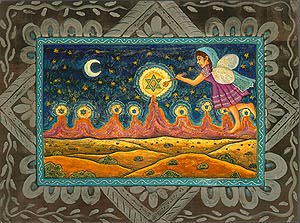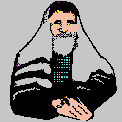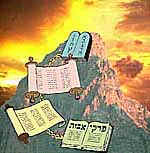 KABBALAH
KABBALAH



MYSTERY BEAUTY
BEAUTY MAGIC
MAGIC







The Hebrew word, Kabbalah
from the verb root k-b-l, "to receive," means literally, "[oral]
received [tradition]." Although there are thousands of extant kabbalistic texts (and
many more which haven't survived), the primary method of teaching Kabbalah until recently
was by means of oral transmission from teacher to disciple. Rabbi Yitzchak Ginsburgh, a
contemporary Israeli Kabbalist, suggests another meaning of the term:
"parallelization" (hakbalah in modern Hebrew), in that Kabbalah teaches,
among other things, how Creation parallels the Creator.

"Kabbalah" is the most
commonly-used term for the Jewish mystical tradition, especially the kind which originated
in twelfth-century France and spread through Europe, the Middle East and eventually
world-wide, to this day. The two main varieties of pre-kabbalistic Jewish mysticism are
called Maaseh Merkavah and Maaseh Bereshit (more on these below), and the
particular variety emerging in eighteenth-century Eastern Europe and continuing among
Ashkenazic Jews until today is called Hasidism.
According to Rabbi Aryeh Kaplan (Meditation
and Kabbalah, 1), there are three types of Kabbalah: theoretical, meditative and
practical. Theoretical Kabbalah concerns the dynamics of how God reveals the divine self
through different channels of divinity and different levels of reality. Meditative
Kabbalah is the practice of connecting with God by means of these channels and/or worlds.
Practical Kabbalah is a more controversial variety, as it involves the permutation of
mystical divine names for magical purposes. This third type gave birth in turn to various
non-Jewish forms of occult and hermetic Kabbalah.

Ancient
Jewish Mysticism
How and when did Jewish mysticism
begin? Although Judaism has probably had its mystical side from the very start, the first
distinct Jewish forms of mysticism emerged during the last two centuries B.C.E. (before
the Christian or Common Era), and continuing for several centuries afterward, in what is
now Israel and in neighbouring lands. This era of Western religion was much like our own,
featuring widespread religious pluralism, syncretism (the free combining of beliefs and
practices from various spiritual traditions), apocalypse (speculations on the heavenly
realms, angels, creation and the end of history) and gnosticism (the attempt to transcend
the material world and reach true knowledge [gnosis] of God).

Out of all these trends there
gradually developed a body of Jewish speculation and meditative practice known as Maaseh
Merkavah, "the Matter of the Chariot," based on the divine chariot vision in
Ezekiel 1. Practitioners studied Torah and Jewish law thoroughly, maintained scrupulous
moral and ritual purity, and then undertook an inner meditative journey through seven
heavenly halls (Hekhalot). Striving to ignore the often dazzling and terrifying visions
along the way, they eventually attained an ecstatic vision of God's glory
"seated" on a throne in "human" form and learned the "secrets of
the Torah." The most well-known text describing this journey is the Hekhalot Rabbati,
"Great [Book of] Halls," from the early medieval period.

During roughly the same period, a
second form of Jewish mysticism developed, known as Maaseh Bereshit, "the Matter of
Creation." This involved speculations on God's method of creation and on the
different "heavens" and "earths" which make up the universe. The
best-known text of this sort is the Sefer Yetzirah ("Book of Formation,")
probably written between the third and sixth centuries.
Little is known about how exactly
these forms of Jewish mysticism became the Kabbalah. It seems that as the Middle Ages
progressed, Jewish mystics became less interested in the Merkavah journey with all its
bizarre angelic names, magical seals and incantations, and more interested in the divine
itself and in how to bridge the gap between God and humanity. Thus the Merkavah
traditions, together with the Maaseh Bereshit speculations, coalesced into a body of
knowledge that incorporated them but also went beyond them: the Kabbalah.

This page
is dedicated with love to my Father, Arthur Klein.
This
web site designed by Naomi Shifra. All rights reserved. Updated 14/2000.






